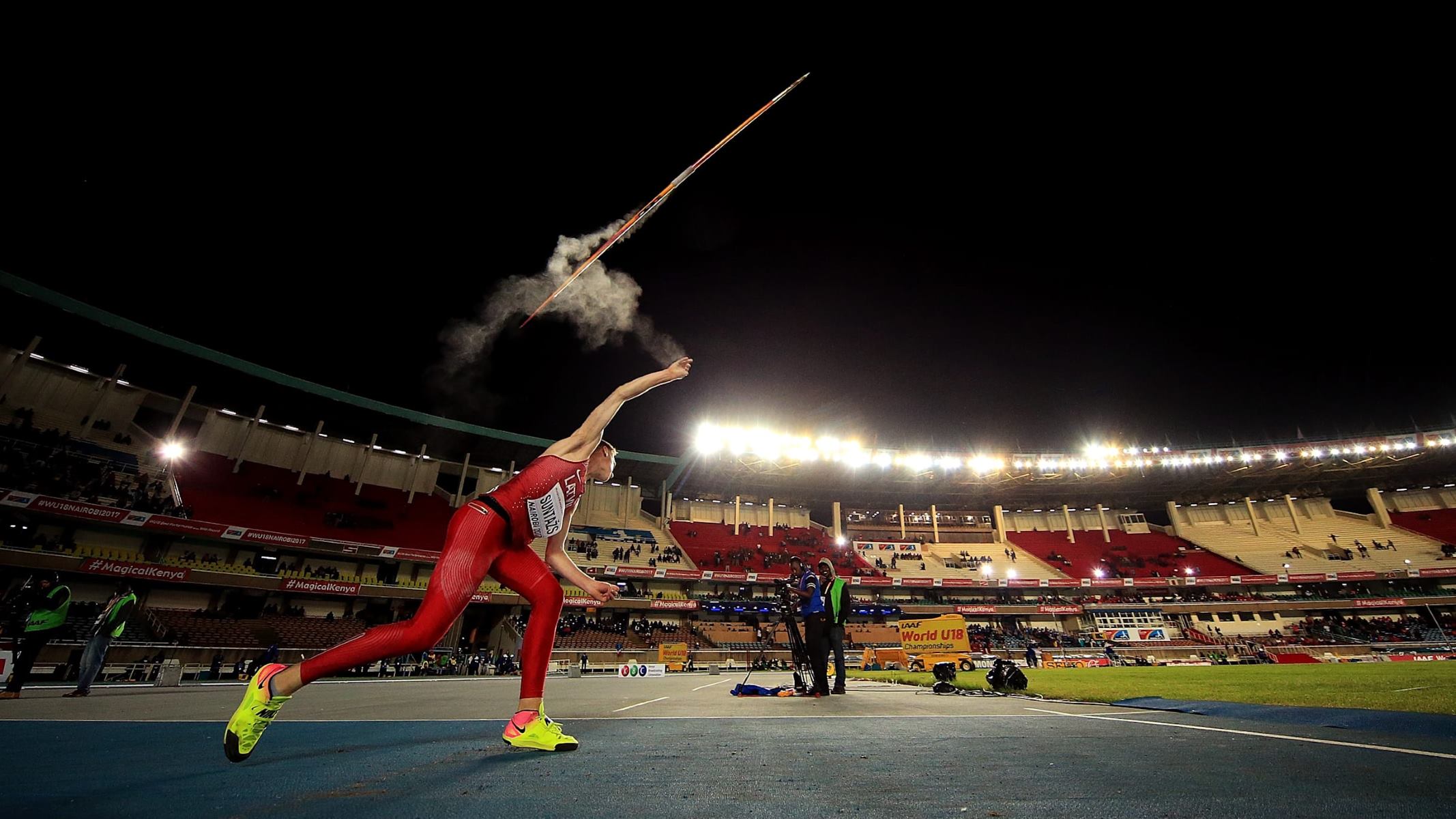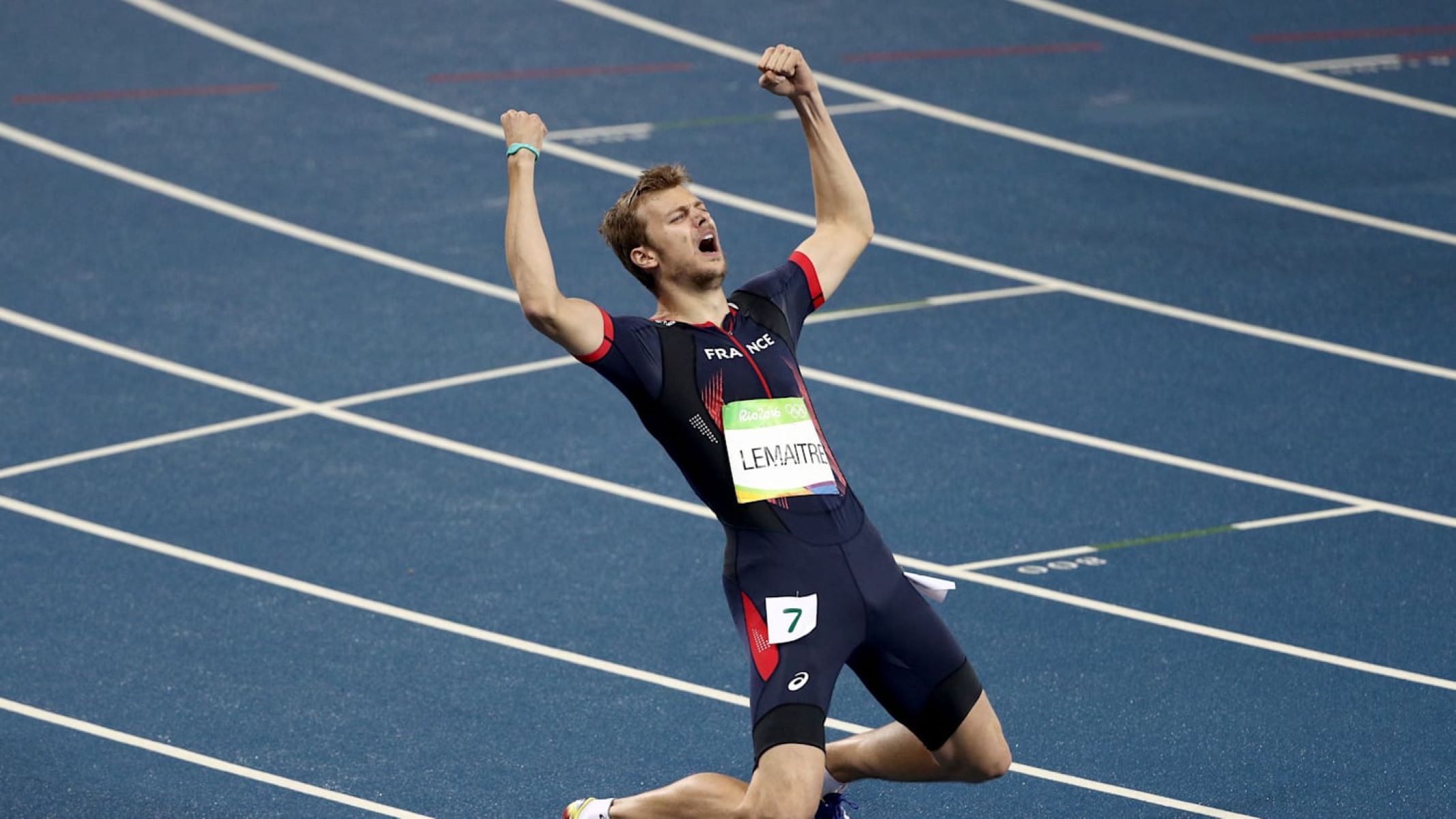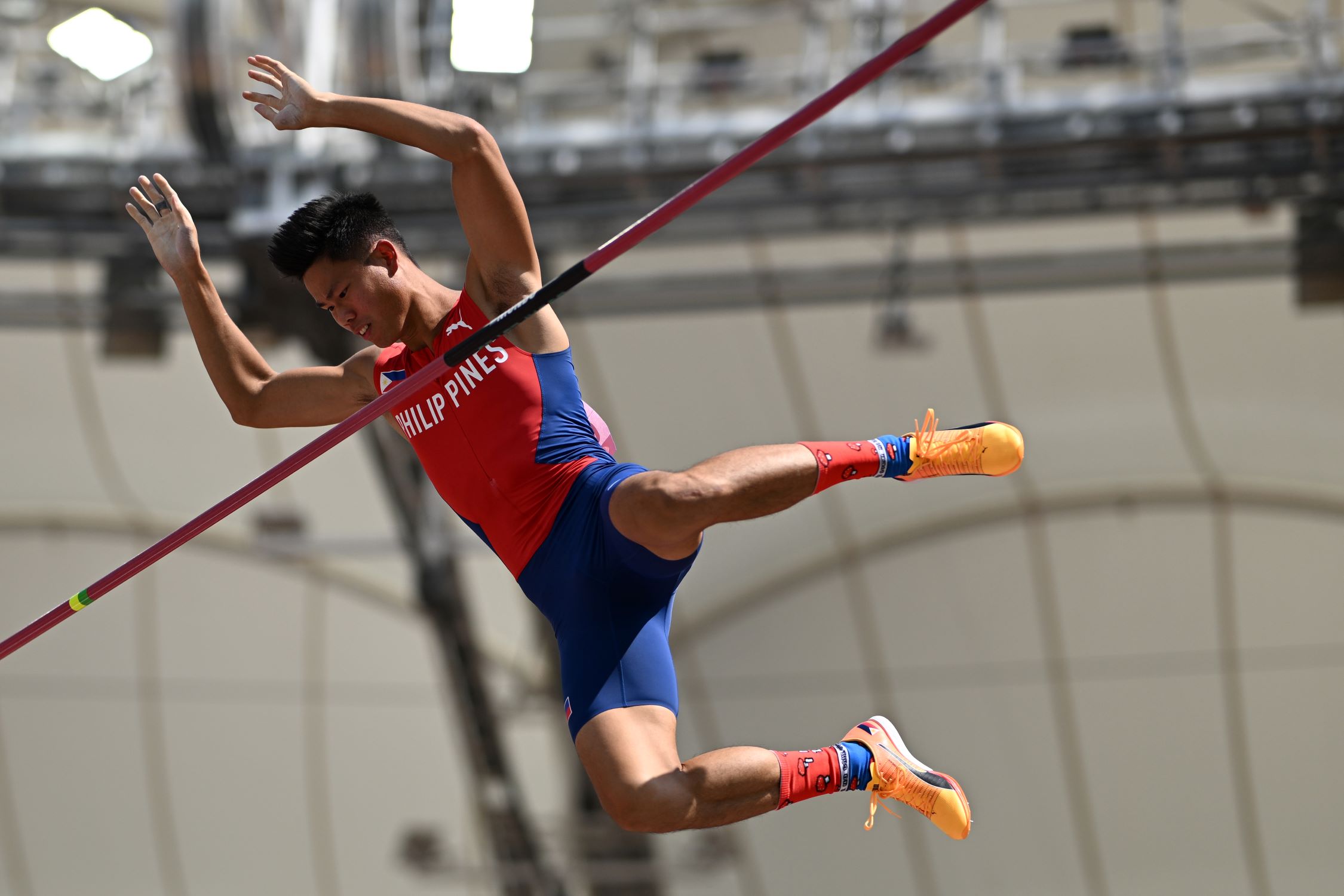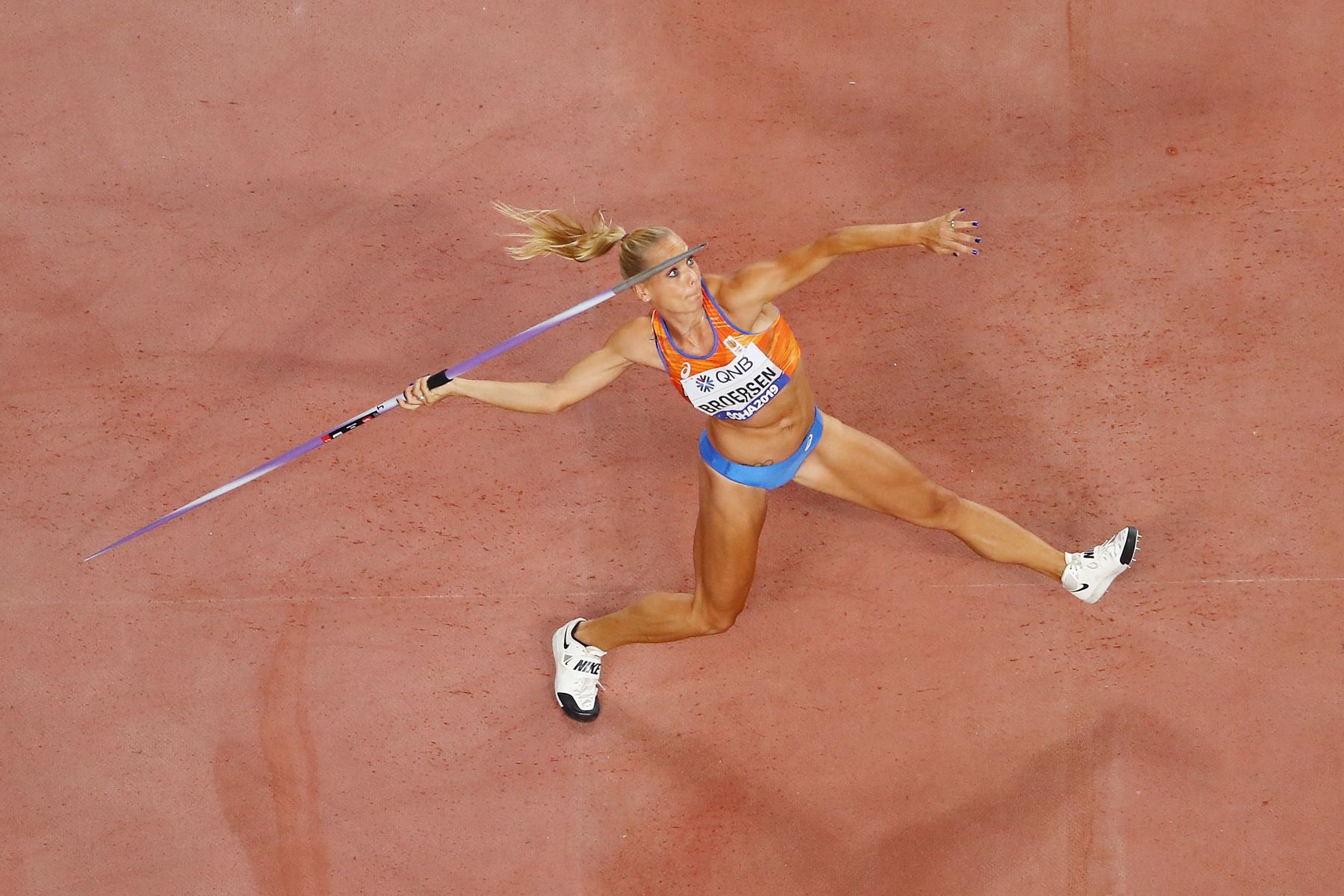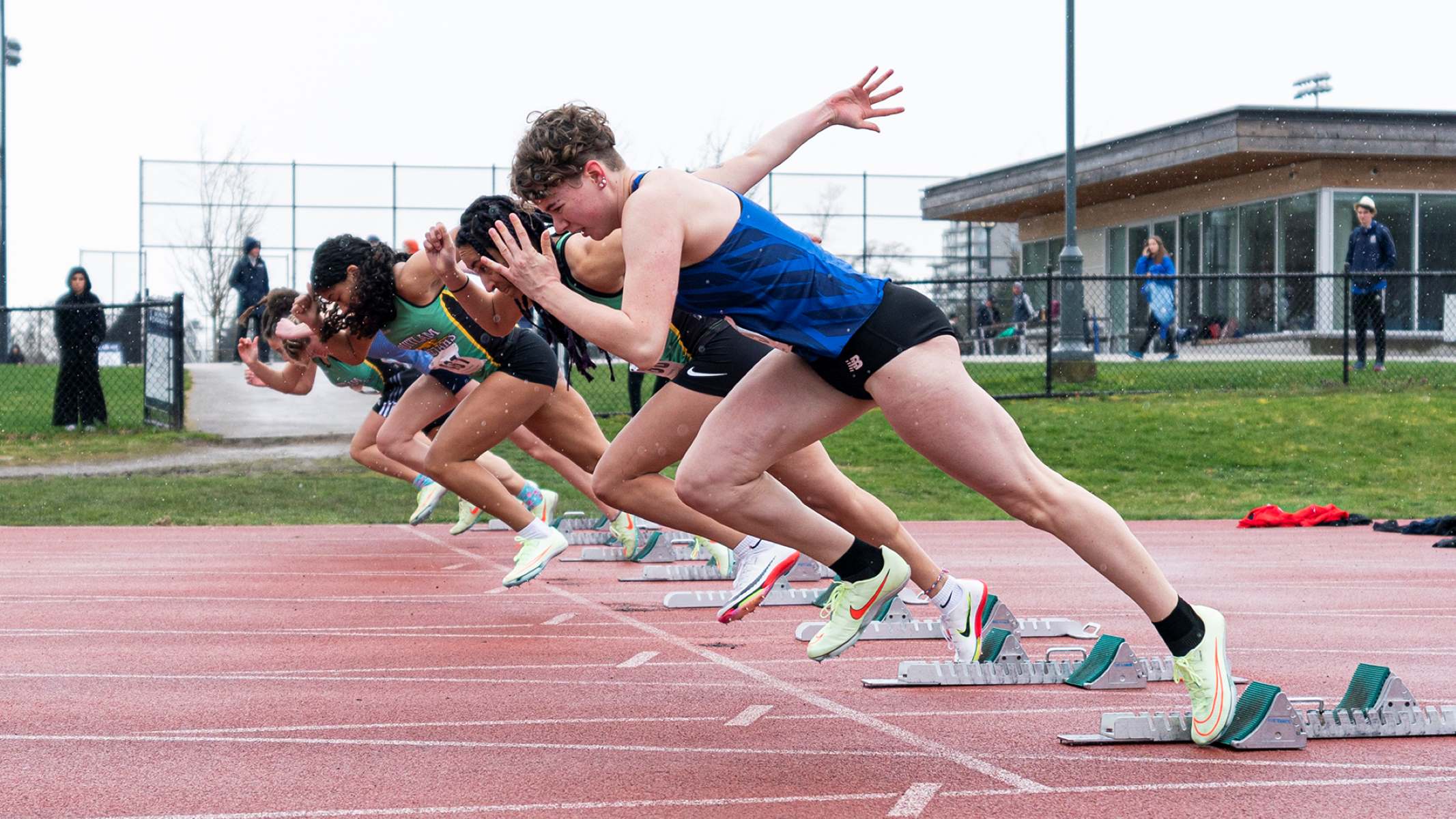Home>Misc>Featured>What Are The Jumping Events In Track And Field


Featured
What Are The Jumping Events In Track And Field
Published: September 4, 2023
Discover the exciting jumping events in track and field with our comprehensive guide. From the long jump to the high jump, get insights into the techniques and records of these featured disciplines.
Introduction
Track and field is a fascinating discipline that encompasses a wide range of events, each offering its own unique challenges and excitement. From sprints to distance running, throwing to hurdling, there is something for everyone in this thrilling sport. One group of events that stands out for its incredible athleticism and grace is the jumping events.
The jumping events in track and field require athletes to showcase their explosive power, agility, and technical skill as they soar through the air, defying gravity. These events not only test an athlete’s physical abilities, but also their mental focus and precision. In this article, we will delve into the four major jumping events: high jump, long jump, triple jump, and pole vault.
Each event has its own specific rules and techniques, making them distinct yet equally captivating to watch. Whether it’s the graceful arc of a high jumper clearing the bar, the explosive leap of a long jumper landing in the sand pit, the rhythmic stride of a triple jumper launching themselves into three consecutive jumps, or the daring ascent of a pole vaulter attempting to clear ever-increasing heights, the jumping events never fail to leave spectators in awe.
These events require a combination of raw athleticism, technique, and mental strength. Athletes must master the intricacies of their respective events, honing their skills to achieve maximum height and distance. The margin for error is small, and one wrong move can result in a missed mark or even injury.
Throughout this article, we will explore the techniques, scoring systems, and notable athletes in each of the jumping events. By gaining a deeper understanding of these events, you’ll be able to appreciate the skill and athleticism showcased by the athletes on the track and field.
High Jump
The high jump is a captivating event that tests an athlete’s ability to clear a horizontal bar set at varying heights without knocking it down. It is a pure display of power, technique, and flexibility.
Traditionally, high jumpers used a technique called the scissors jump, where they would jump off one foot and clear the bar with a scissoring motion of their legs. However, this technique has been replaced by the more modern and efficient technique known as the Fosbury Flop.
In the Fosbury Flop, athletes approach the bar diagonally and use a curved run-up to generate momentum. As they take off, they arch their back and lift their legs over the bar, landing on their back. This technique, popularized by American high jumper Dick Fosbury in the 1960s, revolutionized the sport and allowed athletes to clear higher heights.
Scoring in the high jump is based on the height cleared by the athletes. If multiple athletes clear the same height, the winner is determined by the number of attempts required to clear that height. If athletes are still tied, the countback rule comes into play, considering the number of failed attempts at previous heights.
The high jump has produced legendary athletes who have pushed the limits of human capabilities. One such figure is Javier Sotomayor from Cuba, who set the men’s world record in 1993 with a jump of 2.45 meters (8 feet 0.46 inches). For women, the world record holder is Stefka Kostadinova from Bulgaria, who set a height of 2.09 meters (6 feet 10.28 inches) in 1987, a record that still stands today.
Watching high jumpers elegantly soar over the bar is a remarkable sight. The combination of power, grace, and precision makes the high jump an event that never fails to captivate both athletes and spectators.
Long Jump
The long jump is an electrifying event that showcases an athlete’s explosive power, speed, and ability to achieve maximum distance in a single bound. It is a thrilling spectacle that never fails to captivate audiences.
In the long jump, athletes take off from a designated board and leap into a sandpit, known as the landing area. Their goal is to jump as far as possible while maintaining proper form and technique. It is a test of both style and distance.
During the approach, athletes build up speed and momentum to generate the power needed for a successful jump. As they reach the board, they perform a take-off known as a hitch-kick or hang technique. This involves extending one leg forward while simultaneously driving the other leg backward, creating a whipping motion for optimal distance.
Once in the air, athletes must maintain balance and control while extending their legs forward to achieve maximum distance. The landing phase is critical, as athletes aim to land smoothly in the sandpit without fouling or falling backward.
Scoring in the long jump is determined by the distance measured from the take-off board to the closest mark made in the sandpit by any part of the athlete’s body. The athlete with the longest jump is declared the winner.
Notable long jumpers have left their mark on the sport, both in terms of distance and style. One of the most iconic long jumpers is Bob Beamon, who set a world record of 8.90 meters (29 feet 2.50 inches) at the 1968 Olympic Games in Mexico City. His record-breaking jump was almost two feet longer than the previous world record and stood for 23 years.
The long jump requires a combination of speed, power, and technique, making it a captivating event for athletes and spectators alike. The explosive take-off, the airborne grace, and the anticipation of the landing all contribute to the excitement surrounding this remarkable event.
Triple Jump
The triple jump is a fascinating event that combines speed, power, and precision. It is a unique test of an athlete’s ability to execute three consecutive jumps, showcasing their skills in the hop, step, and jump.
The first phase of the triple jump is the hop, where athletes take off from one foot and land on the same foot after a short flight. This initial jump sets the momentum for the following phases.
Next is the step phase, where athletes transition to the opposite foot and take a single step before propelling themselves into the final jump. This step must be executed with precise timing and coordination to maximize distance.
The final phase is the jump, where athletes launch themselves off the opposite foot and drive their knees upwards. It is in this phase that the athletes strive to achieve the greatest distance. The landing must be executed with control and stability, ensuring that they maintain their balance before exiting the pit.
Scoring in the triple jump is similar to the long jump, with the measured distance from the take-off board to the closest mark in the sandpit determining the athlete’s performance. The competitor with the furthest jump is declared the winner.
Notable triple jumpers have displayed incredible athleticism and skill in this challenging event. One standout is Jonathan Edwards from Great Britain, who set the world record of 18.29 meters (60 feet 0.50 inches) in 1995, a mark that still stands today. This impressive record showcases the immense talent and dedication required to excel in the triple jump.
Triple jumpers must possess a unique blend of speed, power, and finesse. Their ability to execute three distinct jumps seamlessly makes the triple jump a visually captivating event that highlights the skill and athleticism of these remarkable athletes.
Pole Vault
Pole vault is an exhilarating event in which athletes use a flexible pole to propel themselves over a bar set at impressive heights. It requires a combination of strength, speed, technique, and mental focus.
In pole vault, athletes grip the pole and sprint down a runway, building up speed and momentum. As they approach the planting box, they plant the pole into the box and use it to launch themselves into the air. The pole bends and recoils, propelling them upward and over the bar.
Timing and technique are crucial in the pole vault. Athletes must coordinate their movements precisely, achieving maximum height while maintaining control and stability. The slightest miscalculation can result in a failed attempt or a dangerous landing.
As athletes clear the bar, they must then maneuver their bodies to pass over it without knocking it down. Successful vaulters must not only clear the bar, but also demonstrate efficient technique and stability throughout the entire vault.
Scoring in pole vault is based on the highest bar cleared by each athlete. If multiple athletes clear the same height, the winner is determined by the fewest number of attempts required to clear that height. If athletes are still tied, the countback rule comes into play, considering the number of failed attempts at previous heights.
Pole vault has seen incredible advancements over the years, with athletes pushing the boundaries of what is physically possible. The men’s world record holder is Renaud Lavillenie from France, who cleared a height of 6.16 meters (20 feet 2.5 inches) in 2014. For women, the record is held by Yelena Isinbayeva from Russia, who achieved a height of 5.06 meters (16 feet 7.25 inches) in 2009.
The spectacle of pole vault is truly awe-inspiring. Watching athletes soar to great heights, defying gravity with the assistance of a humble pole, is a testament to the incredible athleticism and determination of these remarkable athletes.
Conclusion
The jumping events in track and field are a testament to the extraordinary athleticism, skill, and precision of the athletes who participate in them. From the high jump to the long jump, triple jump, and pole vault, each event has its own unique challenges and thrills.
In the high jump, athletes showcase their ability to clear impressive heights with the use of a strategic approach and the Fosbury Flop technique. The long jump tests athletes’ explosive power as they leap into the sandpit, aiming for maximum distance. The triple jump adds an additional layer of complexity with the execution of three consecutive jumps – the hop, step, and jump. Lastly, the pole vault combines strength, speed, and technique as athletes use a flexible pole to clear heights that seem impossible.
Each of these events requires a combination of physical prowess and mental focus. Athletes must train tirelessly to perfect their technique, overcome mental obstacles, and maximize their performance on competition day. Through their dedication and hard work, they push the boundaries of what is physically achievable.
Throughout the history of these events, we have witnessed remarkable moments and records that stand as a testament to the talent and determination of the athletes who participate. The high jump has seen incredible heights reached by the likes of Javier Sotomayor and Stefka Kostadinova. In the long jump, Bob Beamon’s iconic world record leap continues to inspire. The triple jump has showcased the athleticism of athletes like Jonathan Edwards, who set a record that remains untouched. And in pole vault, Renaud Lavillenie and Yelena Isinbayeva have reached unprecedented heights.
The jumping events in track and field captivate both athletes and spectators alike, with their combination of power, grace, and skill. These events showcase the beauty and athleticism of the human body, as athletes defy gravity and push the limits of what is physically possible.
So, the next time you tune in to watch a track and field competition, take a moment to appreciate the incredible feats accomplished by the athletes in the jumping events. Their dedication, skill, and unfaltering determination make these events a true highlight of any track and field spectacle.


